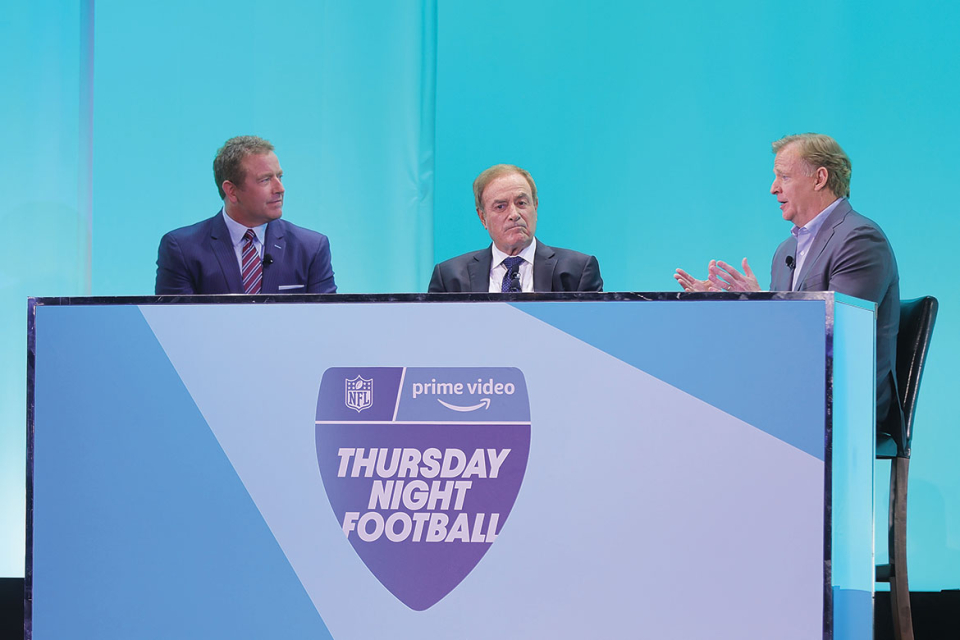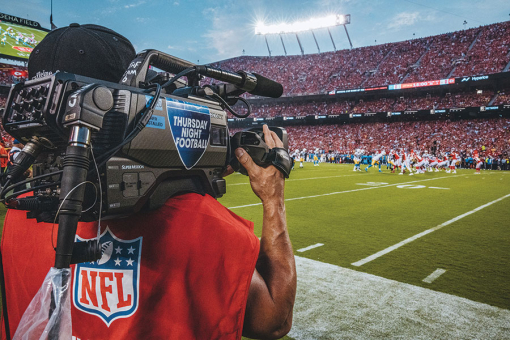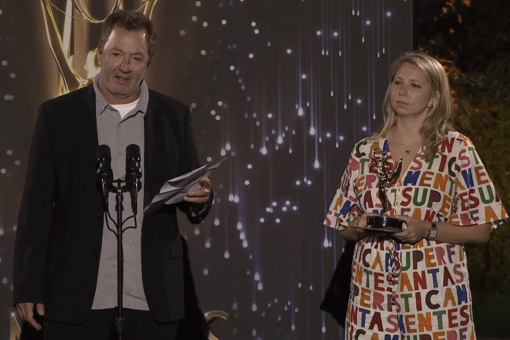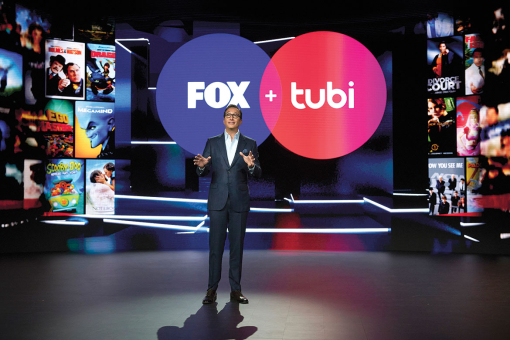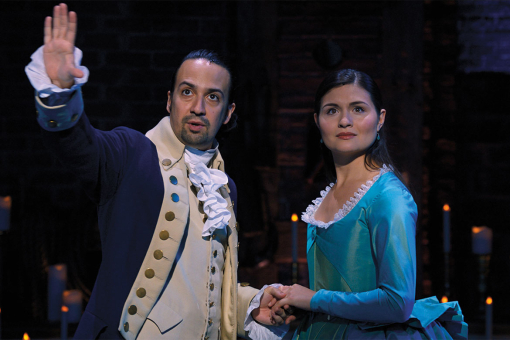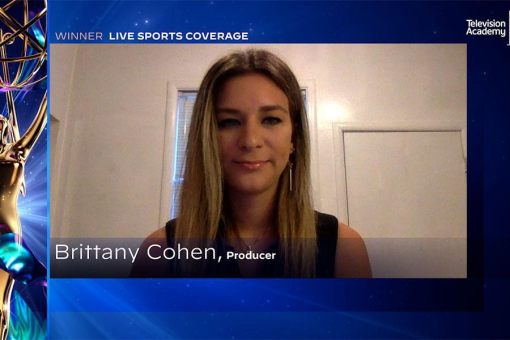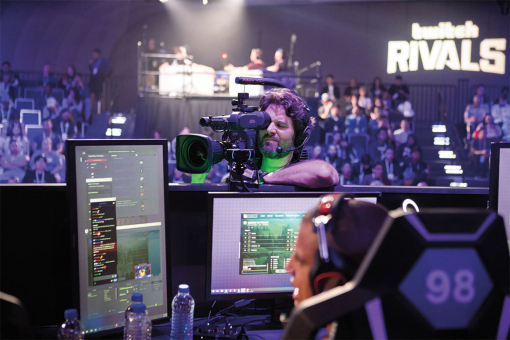Most sports fans can't remember a time before the multiyear, multi-billion-dollar deal. But these eye-popping contracts haven't always been the currency of live televised sports. Back in the 1990s, powerful cable networks began transforming what was already a lucrative business. ESPN, TNT and Fox Sports 1 used exclusive access to live sports — especially playoff games — to build massive audiences and advertiser support, becoming powerful assets in the media and entertainment universe.
In so doing, they poured money like rocket fuel on leagues like the NBA and NFL, as well as the NCAA and college conferences, rewriting the rules of player contracts and salary caps. They also called into question terms like "amateurism," thus dramatically changing the games themselves.
But pro and college sports are now poised to cross into even higher levels of monetary largesse.
As traditional pay-TV ebbs in influence — declining from more than 100 million U.S. homes in 2012 to just under 70 million today — powerful bidders including Amazon and Apple have recently made successful plays for live-TV rights to the NFL, Major League Baseball and Major League Soccer. The vast wealth of these tech giants lets them pursue loss-leader purchases that serve broader, more diffuse goals by attracting users to their digital platforms.
Meanwhile, regional sports networks (RSNs) — which used to inspire millions to sign up for channel bundles to ensure access to their favorite local teams — are going "over the top," offering streaming services directly to viewers, who no longer need that cable or satellite TV subscription.
And the leagues themselves are aggressively looking to stream, acknowledging the video-consumption habits of their younger fans.
All this is disrupting the volatile economics of TV and sports. But can Amazon and Apple have the same impact on sports that ESPN did decades ago? Let's just say it's early days.
"There's certainly potential for that to happen," says Sports Business Journal's John Ourand, arguably the most dialed-in journalist covering sports media. "This is among a number of questions that the entire business is considering right now, but it's too early to predict whether Apple and Amazon are [like] the ESPN of the 1990s."
Rich Greenfield, a high-profile equity analyst and cofounder of LightShed Partners, believes we have a long way to go until we call either Amazon or Apple "the next ESPN." Their circumstances "are not the same," he says, "as [the tech companies] are not reliant on sports like ESPN is. Sports are nice-to-have additions to tech platforms, but sports don't define them the way they did broadcast and cable TV."
Certainly, traditional media companies have yet to lose their grip on live-TV sports rights. In March 2021, the most powerful live TV ratings draw of them all — the National Football League — carved out its U.S. TV rights for the next decade with a set of multiyear deals. Collectively valued at more than $100 billion, the agreements involve, for the most part, the traditional media giants: Disney/ESPN, Paramount Global and its CBS unit, Comcast and its NBCUniversal, and Fox.
The deals were structured around streaming, with plans to increase the presence of NFL games on the conglomerates' subscription streaming platforms, including Peacock and Paramount+, alongside their respective broadcast and cable channels.
Amazon's growing presence was notable. The online retailer gained exclusive rights to NFL's Thursday Night Football (TNF) for its Prime Video service with a twelve-year agreement starting this fall.
Last season, Fox shared TNF with the NFL Network. It was the second-most popular show in all of broadcast primetime, averaging 15.4 million viewers and trailing only Sunday Night Football on NBC, with an average of 18 million.
In 2017, Amazon also began dabbling in the TNF franchise, sharing a handful of games with other networks and using the NFL Network's broadcast infrastructure to present its live streams. Taking full control of the package will be costly for Amazon. Not only has it agreed to pay the NFL a per-season licensing fee of $1 billion, it had to build out infrastructure to stream live sports. It also had to hire high-priced on-air talent and producers.
Nobody would call Amazon's play-calling conservative.
Poached from NBC and Sunday Night Football, play-by-play announcer Al Michaels will receive a reported $75 million over five years to call Amazon's games. Meanwhile, ESPN's Kirk Herbstreit, perhaps the most respected analyst in college football, will moonlight, providing Michaels with color. Herbstreit, who will maintain his Saturday college football gig at Disney/ESPN/ABC this fall, will reportedly add around $10 million per season to his bottom line by calling pro games for Amazon on Thursdays.
Expect to hear a lot of chatter from Michaels and Herbstreit this season and few, if any, commercial breaks. Amazon will offer TNF on its Prime Video subscription streaming service, with advertising and sponsorship opportunities limited to pre-game, pre-kick, halftime and post-game shows.
How will Prime VIdeo's TNF audience compare to the 15.4 million viewers averaged by Fox last season? Amazon doesn't release much information about its subscriber metrics, but it is widely assumed that Prime Video has fewer U.S. users than Netflix, which has some 75 million. Fox was available in about 98.4 million U.S. TV homes last fall.
So, fewer viewers and commercials for rights that cost $1 billion a season — just to get in the door? Armed with a market capitalization of more than $1.1 trillion, Amazon has different economic incentives than the much smaller media conglomerates. For instance, Disney (valued at press time at approximately $174.2 billion) needs to show its shareholders each quarter the ratings points and ad dollars it's getting for its pricey sports-rights investments.
Amazon, on the other hand, has the diffuse goal of drawing users to its platform to shop. Ultimately, only its accountants will be able to tell if TNF is working for the bottom line.
Amazon's aggressive entry into NFL TV rights in the U.S. comes amid its continued expansion into European sports rights. In July, for example, Amazon added European Champions League soccer to a live-sports portfolio in Britain that already includes Premier League soccer, rugby union, tennis and cricket.
Indeed, as seen by Disney's recent multibillion-dollar bid for cricket streaming rights in India, the interest of U.S. streaming VOD companies in live sports is a global affair. But the U.S. market is plenty robust and complex on its own.
Amazon's NFL investment, for instance, comes amid a flurry of live-sports rights activity from Apple, whose vast market cap of more than $2.25 trillion manages even to dwarf Amazon's.
In March, Apple signed a seven-year, $600 million deal with Major League Baseball to bring Friday Night Baseball (FNB) to Apple TV+. In April, Apple began showing two MLB games every Friday on its two-year-old subscription streaming service. (Like Amazon, Apple hasn't disclosed a subscriber count.)
With its FNB livestreams, Apple has aggressively entered the advertising business, packing telecasts with spots for Geico, Budweiser, MasterCard, the U.S. Marine Corps, T-Mobile, Subway and other sponsors. Of course, spots run for Apple's own products and services.
Apple followed up that agreement with a ten-year, $2.5 billion deal with Major League Soccer to put all MLS games, as of 2023, on the Apple TV app, which rides atop the iPhone, on Apple TV streaming devices and on connected-TV gadgets like Roku.
At press time, Apple was bidding against Amazon, Disney/ESPN and Google for rights to the NFL Sunday Ticket out-of-market games package, a subscription offering that has been exclusively marketed by DirecTV since the mid-1990s. DirecTV's $1 billion per-season deal to carry NFL Sunday Ticket expires after this coming season.
Going forward, the league reportedly wants as much as $3 billion a season for NFL Sunday Ticket, which — for about $300 for a full regular season — gives fans TV access to every NFL game not being played in their local market. The NFL is pondering bids.
Meanwhile, Disney — which is already paying the NFL $2.7 billion per season for rights to Monday Night Football — is now facing competition from Amazon and Apple that is driving up the bidding for Sunday Ticket.
And the frenzy is not just about football. Disney felt upward pricing pressure from rivals when it sought to renew rights to Formula 1 auto racing. It signed a deal in June to keep Formula 1 racing on ESPN through 2025 — but had to agree to fees as high as $90 million a year. Fan fervor for Netflix's popular docuseries Formula 1: Drive to Survive helped boost the price, and Netflix even made a bid to get into the live F1 business.
Streaming companies like Amazon aren't just affecting the market for national sports TV rights, they're disrupting the regional sports network business, too.
For the past two decades, RSNs have negotiated TV deals with individual pro teams and collegiate athletic conferences for exclusive access to games not shown on national networks. So, if you're, say, a Los Angeles Lakers fan, you must subscribe to a pay-TV service that carries Charter Communications' Spectrum SportsNet to see most of the team's games.
Not only has this dynamic slowed cord-cutting, it's been transformational on fields and courts, allowing teams like the Lakers to exceed salary-cap and luxury-tax thresholds with regard to player salaries. Certainly, the Lakers wouldn't be able to pay the salary-cap penalties associated with having three "max"-level NBA player deals (each valued at $40 million or more per season) without their $3 billion SportsNet agreement.
But changes are under way.
In June, Sinclair Broadcast Group, one of the biggest owners of TV stations in the U.S., launched Bally Sports+, a direct-to-consumer streaming option for five of its nineteen Bally Sports–branded RSNs.
For $19.99 a month, fans in markets surrounding pro baseball's Kansas City Royals, Milwaukee Brewers, Miami Marlins, Detroit Tigers and Tampa Bay Rays can have streaming access to their local Bally Sports channel — without a traditional pay-TV subscription.
The launch came just weeks after the New England Sports Network (NESN), regional sports network home of baseball's Boston Red Sox and the National Hockey League's Boston Bruins, went over-the-top with NESN+.
Amazon, meanwhile, under the auspices of an investor group that also includes Sinclair, purchased the YES Network (itself an RSN) from Disney in 2019 and has offered paid streaming access to twenty-one Yankees games this summer.
The strategy isn't without peril. Sinclair, for example, ran up debt of nearly $10 billion three years ago in buying the RSNs from Disney/ Fox that became its Bally Sports empire. Sinclair is selling the added revenue potential of Bally Sports+ to its investors to reassure them the bills will be paid. But what happens when traditional pay-TV operators want to pay less — or nothing at all — to license RSNs because their customers can get RSNs without pay-TV?
Notably, satellite TV company Dish Network demurred on the Bally Sports channels last year when its overall carriage deal with Sinclair came up for renewal.
The sports leagues' own interests also factor in. For example, MLB commissioner Rob Manfred has not been shy in expressing his displeasure with Sinclair's Bally Sports+. He has his own ideas about setting up a nationally distributed direct-to-consumer streaming service for Major League Baseball, and that's a big reason why nine of the fourteen MLB teams in the Bally Sports RSN portfolio have not signed on to Bally Sports+.
Manfred should probably get moving on that. The latest transformation of live TV sports is in early innings, but the game is moving fast.
This article originally appeared in emmy magazine issue #8, 2022, under the title, "A Whole New Ballgame."




